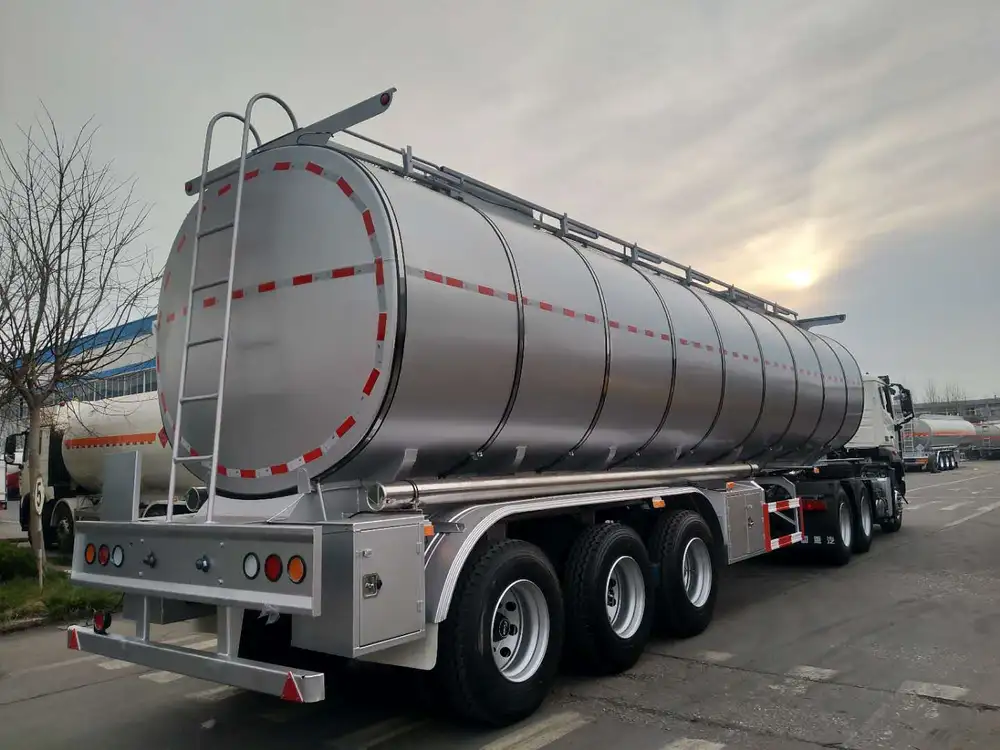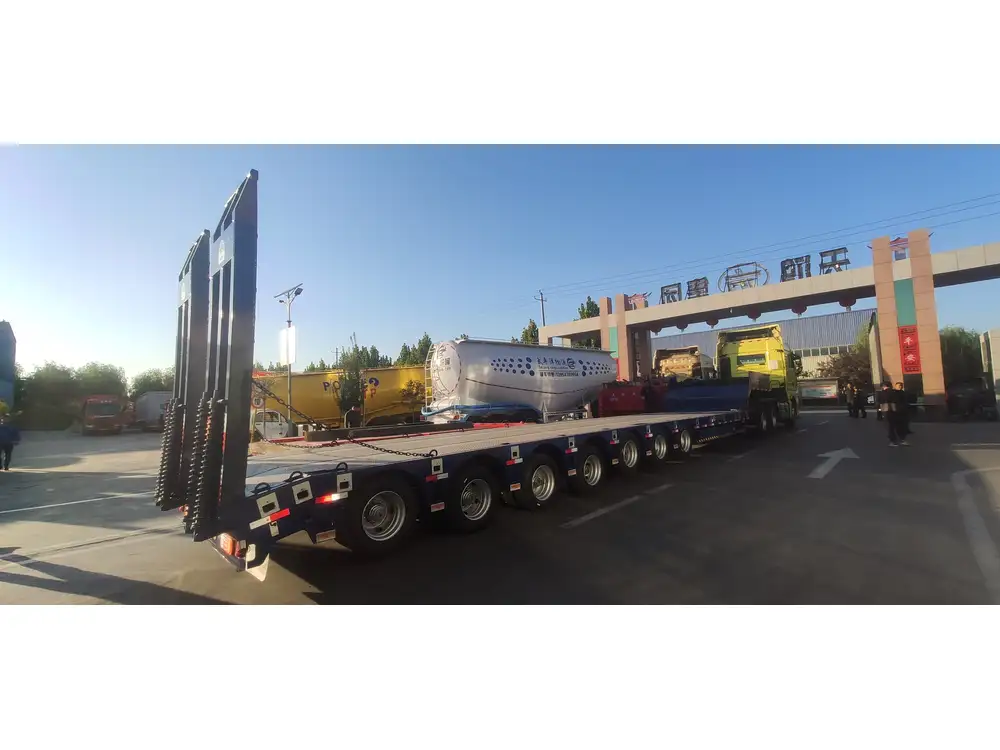As manufacturers of semi-trailers, we understand that knowing the right operating conditions is essential for ensuring efficiency and durability, especially during colder months. One of the critical concerns for trailer owners is the temperature at which water tanks can freeze. In this article, we will dive deep into the factors affecting the freezing of water tanks in trailers, provide tips on prevention, and discuss the implications of freezing on trailer integrity.
Understanding Freezing Points and Conditions
The Basics of Water Freezing
Water freezes at 32°F (0°C), but various environmental factors can influence the freezing process in water tanks situated in trailers. These factors include:
External Temperature: The immediate surrounding temperatures play a crucial role; prolonged exposure to temperatures at or below freezing increases the risk.
Wind Chill: Wind can exacerbate freezing by lowering the perceived temperature around the trailer, causing water in tanks to freeze sooner than expected.
Insulation Quality: The thermal properties of the trailer itself, including the quality of insulation, can significantly impact how quickly the water reaches freezing temperatures.

Factors Influencing Freezing Conditions
Material Composition: The type of materials used for the tank can affect its temperature regulation.
Tank Size: Larger volumes of water may take longer to freeze but will require more effort to prevent from reaching freezing temperatures.
Fluid Dynamics: Water movement significantly affects freezing. Stagnant water is more susceptible to freezing than circulating water.
Environmental Exposure: Tanks exposed to elements—such as direct sunlight or shaded areas—will experience different freezing rates.
Temperature Fluctuations: A Critical Analysis
Table 1 below outlines various temperatures and their impact on water tanks in trailers over different periods:
| External Temp (°F) | Time Until Freezing (Hours) | Remark |
|---|---|---|
| 32°F | 0 (instantaneous) | Water at freezing point. |
| 28°F | 6 – 10 | Gradual cooling; risk increases. |
| 20°F | 2 – 4 | Significant risk of tank freezing. |
| 10°F | 1 – 2 | Immediate danger of ice formation. |
| 0°F | 30 minutes – 1 hour | High likelihood of tank freeze. |
Source: Compiled data from ambient temperature studies on fluid storage.
Identifying Risks For Your Water Tank

Common Signs of Freezing
Uneven Water Flow: If the flow becomes sporadic or inconsistent, this may indicate that water has begun to freeze within the tank or pipes.
Visible Ice Formation: Observing ice on the external structure of the tank is an obvious indicator of freezing.
Low Water Levels: Inadequate water supply may point to ice blockages.
Preventative Measures to Avoid Freezing
Insulation Techniques
Use Quality Insulation Materials: Choosing high R-value insulation can reduce heat loss effectively.
Insulate Exposed Areas: Ensure that all exposed plumbing and tanks receive adequate insulation.

Heating Solutions
Heat Tapes: Applying heat tape or cables around critical areas can provide necessary warmth to prevent freezing.
Internal Heating Sources: Installing small, water-safe heaters inside the tank or the trailer can maintain temperatures above freezing.
Proper Drainage and Maintenance
Regularly Drain: At the end of each season, it is advisable to drain any unused water to prevent stagnation and formation of ice.
Routine Maintenance Check: Establish a schedule for checking insulation, heating elements, and water quality.
Trailer Design Considerations
We manufacture semi-trailers with integrated systems that can minimize freezing risks. Key highlights of our designs include:
Extended Insulation: Our trailers come with enhanced insulation options, suitable for extreme conditions.
Built-In Heating Systems: Some models feature heating systems built directly into the water tanks.

The Impact of Water Tank Freeze on Trailers
Consequential Damage
Structural Compromises: Ice formation can cause ruptures or cracks in tank materials.
Plumbing Issues: Frozen pipes may lead to burst seams and potential leaks upon thawing.
Operational Downtime: A frozen water tank means you won’t have access to water for essential needs, which could impede operational capabilities.
Long-term Maintenance Considerations
Ignoring the signs can lead to costly repairs and extended downtime. Regular inspections and addressing freezing risks are fundamental to maintaining trailer integrity.

Cost Implications of Freezing
Investing in preventive measures may seem costly but can be minimized by comparing potential repair costs against the investments in insulation and heating solutions.
| Expense Type | Estimated Cost | Details |
|---|---|---|
| Heating Systems | $200 – $1500 | Depending on the type of system used. |
| Insulation Installation | $300 – $2000 | Varies based on trailer specifications. |
| Repair Costs for Damage | $500 – $5000 | Long-term damage costs could be substantial. |
Conclusion
Understanding when water tanks freeze in trailers is crucial for ensuring optimal functionality and preventing costly repairs. By analyzing factors such as temperature, external conditions, and mitigation strategies, trailer owners and manufacturers alike can develop a comprehensive plan for maintaining optimal water tank conditions.
Through proper insulation, heating solutions, and routine maintenance, the risk of operational downtime and structural damage is significantly reduced.
This multifaceted approach allows trailer operators to focus more on their operations while ensuring that their water systems remain functional throughout the colder months. By remaining proactive, we can work together to enhance the longevity and efficiency of our trailer technology.



